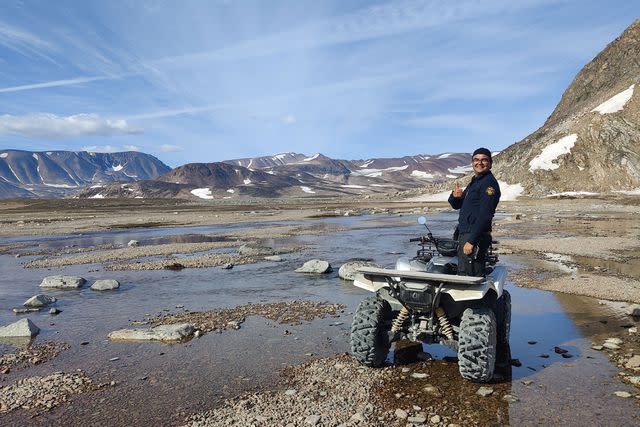There's a Surprisingly Tasty Burger Joint Hiding in the Most Remote Town in the Western Hemisphere
It's worth the two-week round trip.
The East Coast of Greenland is a region characterized by colossal natural wonder. Encircling its coastline are the world’s largest fjords, bespangled with icebergs the size of Madison Square Garden. They are bound by granite cliffs rivaling those of Yosemite, topped by crags soaring skyward like the pinnacles of Patagonia. It’s all impossibly far-flung. In fact, Ittoqqortoormiit—one of the only settlements along its shores—is commonly regarded as the most remote inhabited community in the Western Hemisphere. It also happens to be home to one hell of a good hamburger.
“Our only restaurant in town is a friendly neighborhood spot specializing in burgers, fries, sodas, and hotdogs,” says Niels Rasmussen, a tour guide for Hurtigruten Expeditions, one of the few cruise lines floating people to this part of the planet. “Although you wouldn’t expect it from the nondescript exterior, it’s a pretty straightforward burger joint.”
In fact, everything about the place is pretty straightforward — from its concise menu to its very name, Orormersiardarpi, which means “the place to get a bite” in Eastern Greenlandic dialect. It’s been a welcome addition to the town since opening earlier in the year, earning five stars across the board in its three Google reviews. One of those reviewers even claims it has “the best ice water in the world.” Thanks for weighing in, NakedPeekaBoo.
Related: 10 Extremely Remote Restaurants That Belong on Your Bucket List
Rasmussen, for his part, is more impressed by the greasy, on-the-go patties. Growing up in Ittoqqortoormiit, fast food had a far different meaning. "We cook anything we can catch, and we are a hunting community, so we don't do anything fancy," he explains. "But the meats we get are filled with flavor. Muskox and polar bear are my favorites," he adds with a laugh.
While you won't find any polar bear burgers at Orormersiardarpi, you will most certainly receive service with a smile. In this quaint village of some 450 year-round residents, outsiders invariably feel welcomed within one big family, which is especially true for Rasmussen whenever he finds himself at this hip eatery. "Mette, the owner, is actually my grand-cousin, funny enough," he admits.

Courtesy of Niels Rasmussen
Aboard the FS Fram, a ship that's part of the Hurtigruten fleet, Rasmussen's clique has swelled to include the approximately 250 guests he ferries into his hometown whenever the ship enters the surrounding Scoresby Sound. It's a voyage that's only possible during the expedition season of August and September, a narrow window when sea ice has melted extensively enough to enable navigation of the 200-mile-long fjord system.
"Working on Fram has been a dream job of mine," he confirms of life on deck, sharing the waterways—and cultural pathways—that formed him. "I feel proud and honored to be able to show my roots and the places that played a huge role in making me who I am today."
Hurtigruten passengers arrive ashore on zodiacs and are afforded several hours of sightseeing in Ittoqqortoormiit. This inevitably includes the sweeping panorama of several dozen colorful houses crowding the hillside — painted brightly in a traditionally Greenlandic spectrum of blue, purple, green, and orange. You might even get to peer up at ascending weather balloons (the area is an important meteorological waypoint for Western Europe) or photograph the daily feed of snarling snow dogs. Until recently, you could even belly up to the local bar. Sadly, it closed during the pandemic and hasn't reopened since.
"It was a great gathering place for us, and when it shut down, it was missed, of course," according to Rasmussen. "Nevertheless, we managed just fine with only holding parties privately. We are very adaptive in Ittoqqortoormiit, so we didn't do anything in forms of protest or something in that direction."
And why would they, now that they've got a great burger joint to call their own? If you want a taste, simply set sail during lunch hours and have around 150 Danish Krone in hand. It's the equivalent of $25 for a single meal. A two-week cruise aboard the Fram, exploring the coast of Eastern Greenland, is, of course, sold separately. That'll set you back a minimum of $8,200 for an entry-level cabin. A modest fee in exchange for getting to say you devoured a burger at the edge of the earth.
For more Food & Wine news, make sure to sign up for our newsletter!
Read the original article on Food & Wine.

